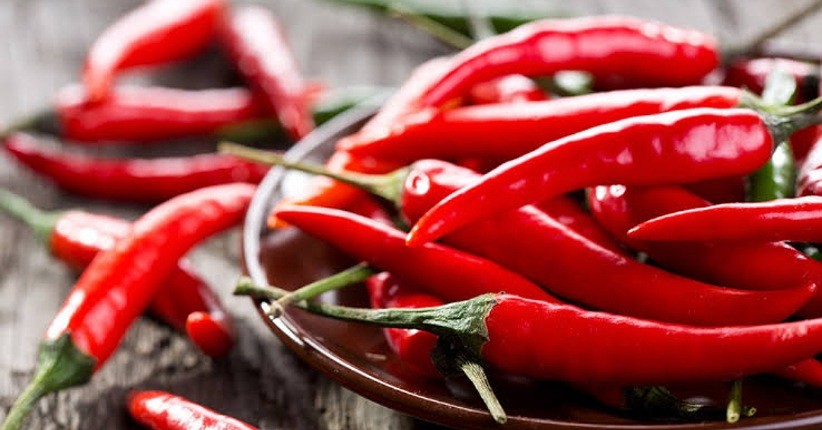What is food? It is fuel for our bodies. But it is not as simple as it sounds. Different foods have a different effect on our body. And in order to have a healthy body, we have to understand the effect each food has on the human body. Today, we will talk about the list of thermic foods that help us boost our metabolism.
How do these thermic foods help? Well, all of these foods increase our metabolic rate. That is the speed at which our body processes food and turns it into fuel. The faster our metabolism works, the more calories it burns.
Understanding thermic foods can help us improve our weight loss and weight management method. How our body spends energy is crucial to making sure we have a healthy look.
Understanding The Thermic Effect Of Food
So, what is the thermic effect of food? Some nutritionists refer to it as diet-induced thermogenesis or DIT. Some call it specific dynamic action, SDA. Basically, it is how some of the calories in the food we consume are used in digesting, absorbing, metabolizing, and storing the remaining energy from the food we consume.
Our metabolism burns some of the calories off as heat. The best way to understand the thermic effect of food or TEF is the amount of energy our body requires to digest and process food.
But not all foods are the same. We know this by looking at nutrients. Some foods are richer in protein and healthy fats, others in carbohydrates.
Depending on what you eat, your energy expenditure can be big or small. And it plays a huge role in your metabolism.
For example, to understand it better, fat contains the lowest thermic effect. It is between 0 and 3% of the energy consumed. Carbs, on the other hand, have a higher percentage ranging between 5 and 10%. Protein, of course, is higher on the list with a range between 20% and 30% thermic effect.
What Is The Role Of Insulin In The Thermic Effect Of Food?
When we talk about the list of thermic foods and thermic effects we have to mention insulin as well. It is the hormone secreted by the body to transport glucose into the cells. We use that glucose to release energy and control our blood sugar levels.
Insulin also functions as a fat-storage hormone, making its effect a double-edged sword. How does insulin influence TEF? Well, foods that crank up the release of insulin lead to more fat storage because insulin inhibits lipolysis.
We also have to note our body releases insulin as part of the normal process. Weight gain usually comes because of energy surplus, for example, you consume more energy than your body needs.
What Influences The Thermic Effect Of Food?
We have to stress that we digest food differently. One of the common mistakes people make is thinking the same portion of food takes the same amount of energy to digest. But that is not the case. There are many factors that can determine a food’s thermic effect.
For starters, TEF is lower in older people because of the difference in their digestive capabilities.
Physical activity also plays a role. When we exercise, we use much more energy.
Size of the meal plays a role, as bigger meals translate to bigger energy expenditure by the body.
Meal composition oF meals containing more carbs and protein takes more energy to process. Speaking of meals, frequency and timing are important as well. It is better to consume smaller but more frequent meals.
Thermic Foods
With that in mind, let’s talk about the list of thermic foods. Here it is.
Lean Meats

Protein has the biggest thermogenic response. And it is only logical that foods rich in lean protein belong to our list of thermic foods.
Speaking of lean meats, some good options include chicken, turkey, duck, pork, and red meat.
Broccoli

Broccoli doesn’t have high carbs or high protein percentage. But the veggie contains a substance called glucoraphanin. This substance helps retune the metabolism, lower body fat levels, and reduce the energy of age-related diseases.
Broccoli also helps prevent and slow down some forms of cancer. So, make sure to add it to your meals. A combination of chicken and broccoli is a perfect combination.
Eggs

Eggs contain more than 6g of protein per single egg. And just like lean meats, they have a higher thermic effect compared to carbs and fat alternatives.
You can consume eggs in different ways in the morning. Or if you like to add some throughout the day, many salads require eggs.
Flaxseeds

These seeds contain a high dose of protein. They are one of the more popular meat alternatives for vegetarians and vegans.
People consume flaxseeds for several health benefits. Besides boosting your metabolism, these seeds also help with diabetes, fat burn, obesity, and cardiovascular diseases.
Flaxseeds also contain fiber that can improve your gut’s bacterial profile.
Wild Seafood

Wild-caught fatty fish is a great source of omega 3 fatty acids and protein. They help reduce inflammation, but also provide a great thermic effect by boosting energy expenditure.
People who regularly consume fatty fish live a healthier life. Fish oils also help enhance the action of thyroid hormones, another factor in controlling metabolic rate.
Cottage Cheese

Bodybuilders love cottage cheese. It is a staple in any bodybuilding thermogenic diet. Why? Because cottage cheese is a concentrated source of protein, vitamins, and minerals.
Because of the high protein percentage, cottage cheese can increase the postprandial thermogenesis at 2.5 hours post-meal compared to a high carbohydrate diet.
Chili Peppers

If you want to find some fat-burning foods, look no further than chili peppers. They are high in capsaicin, a compound that can promote thermogenesis.
Capsaicin is a component in chili peppers and cayenne pepper. If you have ever eaten chili peppers, you have noticed higher body temperature, right? Well, chili peppers make you sweat, but they also help burn more calories. That belly fat will disappear for sure.
Other benefits of chili peppers include an improved cardiovascular system and reduced inflammation.
Legumes

We talked previously about vegetarian alternatives for protein. Vegans can also consume legumes, foods high in high protein and carbs. They are great for burning fat and losing weight. You can find legumes on almost any weight loss diet.
Legumes also contain a high dose of fiber. It helps reduce insulin spikes, improved blood regulation, and controls weight and obesity. That in turn will reduce the risk of heart disease.
Sweet Potatoes

This might come as a surprise, but sweet potatoes are great for improving metabolism and burning body fat. They are a great source of beta-carotene and fiber. But most importantly, sweet potatoes reduce insulin resistance.
Nuts

They might have a high-calorie tag attached to them, but nuts are worth consuming. They are loaded with healthy fat and protein.
And they also have a thermic effect.
Ginger

We said before that consuming chili peppers will make you sweat and burn visceral fat. Well, the same applies to ginger. Just add a pinch of this fat-burning food to your meals and you will see your body temperature increasing.
Ginger also helps in weight loss by controlling appetite.
Turmeric

Here is another spice that will make you sweat. The spice came to the Western world in the past several years and we cannot help but love it. Turmeric fights inflammation, reduces pain, helps with fat loss, boosts metabolism, and everything in between.
Leafy Green Vegetables

Spinach, kale, Brussels sprouts, and everything in between. Leafy greens are a great source of non-animal iron, vitamin C, and many other compounds that help with weight loss and fat burning.
Tips To Boost Your Metabolism
Let’s finish off our list with some tips on how to further improve your metabolism. Sticking to a healthy diet is a great part of the process. But there are some other ways to boost it as well.
- Drink water to decrease body weight and BMI
- Get enough sleep to reduce obesity and diabetes
- Lift weights and practice strength and resistance training
- Consume drinks like green tea
- Pay attention to negative calorie foods (fast food)

